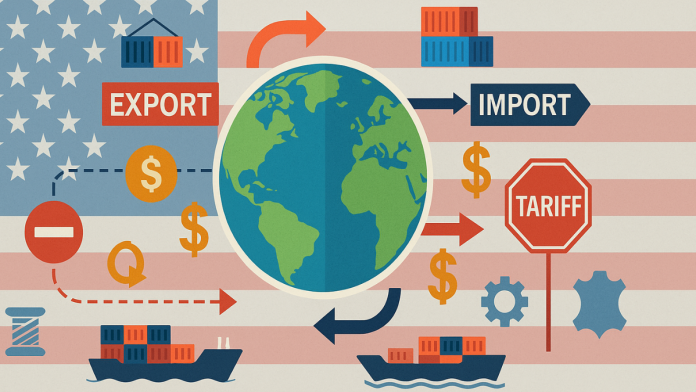The United States is collecting record amounts of money through new tariffs placed on goods from several countries. President Donald Trump recently defended this aggressive move, saying it’s something the country should have done a long time ago. He also shared an unexpected idea—using some of the tariff money to give cash payments to everyday Americans.
Trump said the aim of the new plan is fairness in trade, not control. According to him, the country is now bringing in “hundreds of billions of dollars,” and that money could be used to help pay off national debt or be passed on directly to people in the form of a dividend, especially for those in the middle and lower income groups.
US Collecting Billions Through New Tariffs
Trump explained that the new tariff strategy is helping America earn big money. These tariffs are extra taxes placed on goods entering the U.S. from other countries. The President said this new system is fairer and brings back control over how the U.S. does business with the world.
He recalled how he had started a similar approach during his first term, mainly targeting China. However, the Covid-19 pandemic interrupted those plans. Now, his administration has expanded the idea to more than a dozen countries.
US Tariffs Narrow Cost Gap, China Plus One Strategy Under Pressure
Trump added that the U.S. is not just trying to gain an advantage, but to make trade equal. “We should’ve done this many years ago,” he said. He also raised the possibility of using the revenue to support Americans directly. “There could be a distribution or a dividend to the people of our country,” he said, making it clear that the idea is focused on helping working-class families.
India Hit Hard, But Trade Talks Continue
India is facing one of the biggest impacts from the new tariffs. Nearly half of its $86 billion in yearly exports to the U.S. are now being taxed at 25 percent. Items like clothing, leather products, and industrial goods are hit the hardest. However, some important exports such as pharmaceuticals, electronics, and petroleum products were not affected by the new rules.
Despite the tough move, India is still in talks with the U.S. to find a middle ground. The next round of negotiations is planned for later this month in India. According to sources close to the talks, India is open to changes but has made it clear that certain areas—like agriculture, dairy, and genetically modified food—are non-negotiable.
These sectors are considered sensitive by Indian officials, who believe they must be protected in any trade agreement.
🔥 First oil pact, now tariff punch — why the U.S. is still taxing Pakistan’s goods
Allies Accept New Tariff Terms to Avoid Worse Deals
While India is still negotiating, many other U.S. trading partners have agreed to Trump’s new tariff terms. The United Kingdom, for example, accepted a 10 percent tariff—much higher than the 1.3 percent it paid before. The European Union and Japan also agreed to a 15 percent tariff rate. This is less than the originally planned 30 percent and 25 percent, but still a sharp increase from previous years.
Countries like South Korea, Vietnam, Pakistan, Indonesia, and the Philippines have also signed on to new deals. Even nations that got some relief are still paying more than they did a few years ago. Angola, for example, saw its tariff drop from 32 percent to 15 percent in April. But in 2022, its rate was just 1.5 percent.
Trump’s announcement on the new tariffs caused financial markets to fall sharply. As a result, his administration decided to delay some of the new charges for 90 days. This pause gives affected countries time to work out their own trade deals with the U.S. and avoid higher taxes.
Still, Trump remains firm that the goal is trade equality. “We want to see reciprocal wherever we can,” he said. According to him, the current plan is helping the country earn more than ever before.


